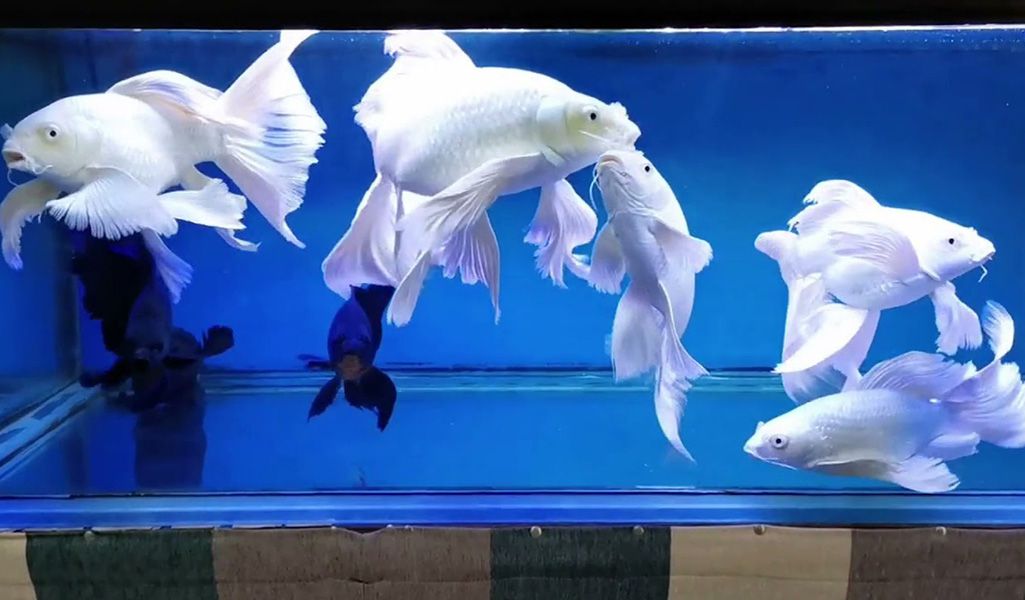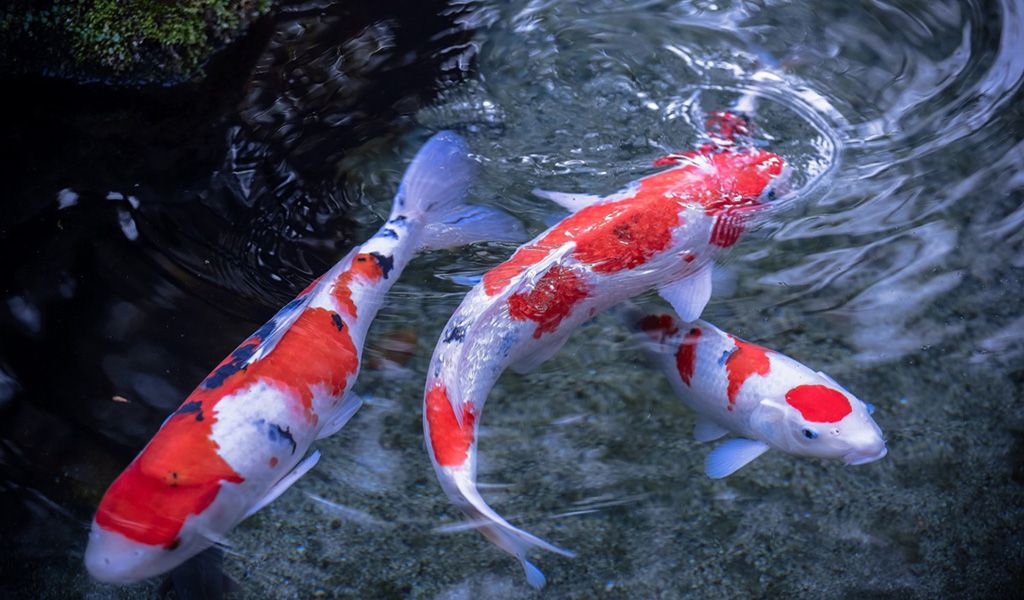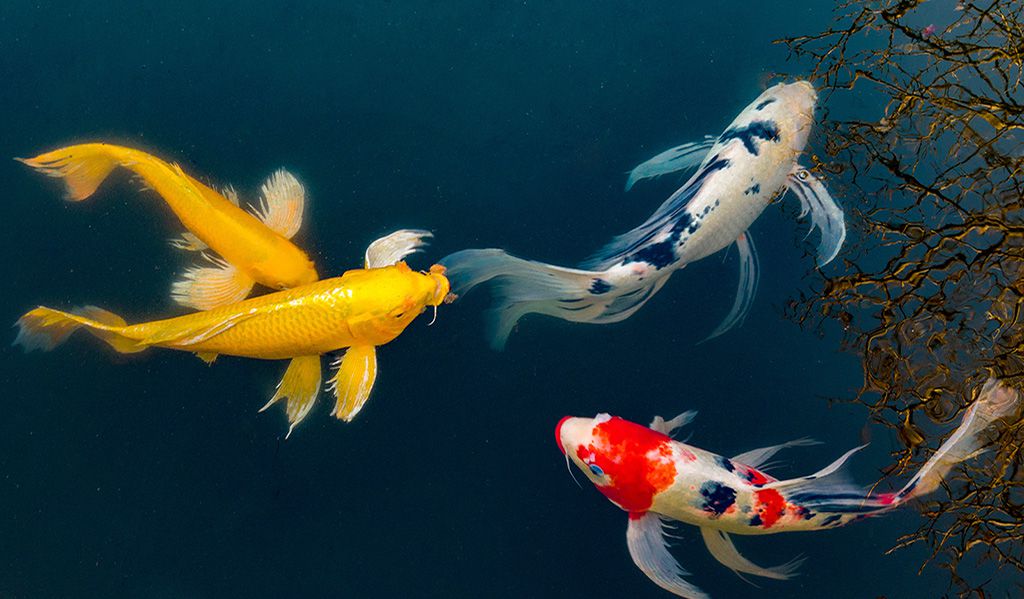How to Take Good Care of Butterfly Koi Fish
Belonging to the Cyprinidae family, most butterfly koi fish are colorful and have brilliant colors. Butterfly koi fish are one variety of them, which are hybridized by two types of fish. Without further ado, this article will cover a lot more about butterfly koi fish, like a care guideline. And you may want to keep one in your pond after reading.
Content Table
Butterfly koi fish
Being famous for elongated fins, butterfly koi fish are freshwater ornamental fish and gain popularity among aquarists. Before further learning, let’s know some basic info about butterfly koi fish.
- Family: Cyprinidae
- Scientific name: Cyprinus carpio
- Common name: Butterfly koi fish/Long-fin koi/Dragon koi fish
- Origin: Indonesia
- Temperament: peaceful
- Diet: Omnivorous
- Lifespan: 25-35 years
- Size: 36-40 inches
- Minimum tank size: 50 gallon
- Minimum pond size: 1000 gallon

butterfly koi fish
With vibrant colors and long flowing fins, butterfly koi fish are hardy, active, and peaceful. Generally, butterfly koi fish possess various colors, like red, yellow, blue, orange, black, and others. Besides, as they grow up, butterfly koi fish will become bigger and their fins will be longer. Exactly, they can grow up to 12-15 inches. Therefore, you should make sure sufficient room for them. Usually, keeping butterfly koi fish in ponds is the best alternative.
Are butterfly koi hard to keep
Butterfly koi fish are peaceful, and they are suitable for beginners. Then how to care for butterfly koi fish? Basically, it is crucial to provide sufficient space, maintain great water quality, and keep adequate oxygen. Do not worry, this segment will give you more ideas.
Water parameters & water quality
Requirements of water parameters:
- Water temperature: 65-75℉
- pH level: 7.5-7.8
- Ammonia level: 0 ppm
- Nitrite level: 0 ppm
- Nitrate level: less than 20 ppm
Butterfly koi fish are cold-water fish. Nevertheless, if the water temperature drops too low, it may cause health problems for them. On the contrary, high water temp would reduce the dissolved oxygen level. While it also improves the ammonia level, which is harmful to your fish. Also, if the butterfly koi fish are kept in a pond, a de-icer may be necessary for the winter seasons. It can avoid frozen water surfaces and enable koi to breathe.
In addition to this, maintaining great water quality is equally critical. You should change and test the water regularly, for example, once a week or once every other week. In this case, a DC water pump or a vacuum cleaner would help you out.
Diet
Butterfly koi fish are omnivorous. Nonetheless, providing a balanced diet is vital. Rich in nutrients and proteins, the pellets you feed should not be over 30 percent. Usually, you can feed your butterfly koi once or twice each day. And you should make sure that the fish can finish eating within 2 minutes. Also, it is recommended to reduce food quantities accordingly in winter. Actually, a pond fish feeder would help you a lot. It can dispense food with programmable time and portion. And the fish feeder is weatherproof and safe from wildlife.
Can butterfly koi live with regular koi?
Can you keep butterfly koi fish with regular koi fish? Generally, it is feasible to do so. Both butterfly koi and regular koi are carps, and the two are not aggressive. But there are also some differences between butterfly koi fish and regular koi fish.

regular koi fish
Fins
- Butterfly koi fish: The older, the longer.
- Regular koi fish: Stop growing at a certain point.
Whiskers
- Butterfly koi fish & Regular koi fish: The former’s whiskers are slightly longer than the latter.
Body shape
- Butterfly koi fish: torpedo shape
- Regular koi fish: oval shape
On the other side, what should you get to keep butterfly koi and regular koi in a fish tank? Take a 75-gallon fish tank as an example, an aquarium filter is required, because it makes sense in removing excess waste and toxic substances, such as ammonia, nitrite, and nitrate. And a fish tank filter pump can purify the green water, and create a healthy and clean living environment for koi fish. Besides that, an aquarium air pump is needed. It helps to oxygenate the water and keep sufficient oxygen.
For instance, a 10W powerful air pump is an excellent option, while the air pump also runs quietly. Moreover, adding a vacuum cleaner enables you to change the water conveniently. A vacuum cleaner helps you change water easily. It can also suck away feces and clean every corner of your tank. Furthermore, it is better to add a thermometer to check the real-time water temperature. Then, you can adjust the water temp in time.
By the way, aside from regular koi fish, pond goldfish also can be kept with butterfly koi fish. However, some fish are not suitable for butterfly koi fish tanks or ponds, such as Guppies, Danios, and Cichlids. As guppies and danios are too small, which may become food sources for butterfly koi fish. On the other hand, cichlids are aggressive. As a result, it may cause injury to butterfly koi. Aside from that, for more additional information about koi fish ponds, you can go to Things to Consider Before Starting a Koi Fish Pond.

butterfly koi fish
Can butterfly koi live without an air pump
Without an air pump, can butterfly koi fish survive? Exactly, it depends on the fish’s density, living space, and living conditions. If the fish density is high, your fish may live only for a few hours without an air pump. Generally, butterfly koi fish can live for two days without an air pump. But koi fish would face death if they are deprived of oxygen for a long time.
As we have mentioned above, high water temp would consume more oxygen. However, a sufficient oxygen level is essential for butterfly koi fish, especially in warm weather. And it is best to keep the oxygen level at or above 6 ppm. Additionally, an air pump plays a role in oxygenating the water, expelling excess carbon dioxide, and reproducing beneficial bacteria. Hence, if necessary, you should add an air pump or air stone to aerate the water.
By the way, there are signals of oxygen depletion of butterfly koi fish:
- Fish breathe on the water’s surface
- Loss of appetite
- Fish stay at the bottom of tanks or ponds
On the other side, here are some tips about air pump usage. In general, as for tanks with low fish density, you should keep the air pump on for about 4-6 hours each day. But you should turn on your air pump for 24 hours every day if your fish tank is with high fish density and tiny space.

I’m still looking for the ogon short body longfin milky white butterfly koi carp the name hygger comes up under some of the fish I’m looking for but when I called they said they didn’t have them. I’ve been looking for 4 months for my other who bedridden and thermally I’ll I got her a 190 gal tank so she can lay and watch this beautiflull fish but now I can’t find them for sale if you don’t carry them could you possibly find a couple of them for me thank you
Hi Jan davis,
Most of the butterfly koi is breed in the live store, you can buy them from the fish store.
Good luck to you
hygger team
I keep my koi in a clear bare bottom tank much easier to clean and koi can eat the food if it on the bottom of the tank and also they won’t have problems with theirs gills because they won’t be getting sand in theirs gills
Yep, a good job. A clear bare bottom tank is beneficial for the koi, because koi fish like to turn the sand, if there isn’t a cleaner for sand washing, clean up is more trouble.